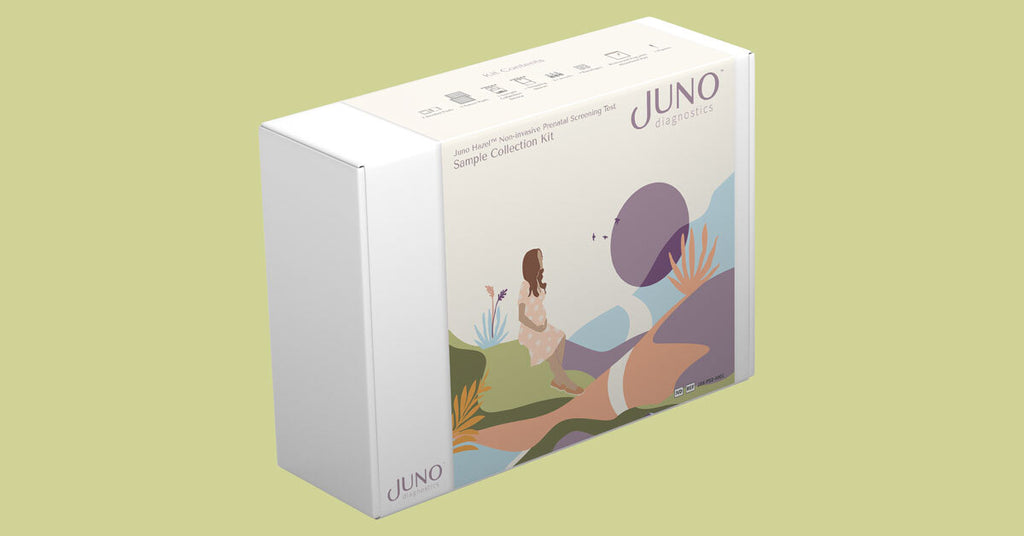Guide To Understanding Aneuploidy
You might’ve heard, but our bodies are complex things, made of tiny building blocks called cells! These cells, in so many ways, contain the road map for what makes us unique human beings. This road map is stored within our DNA and organized in structures called chromosomes. And while these structures have pretty clear instructions most of the time, occasionally, our chromosomes can get a bit mixed up, resulting in a condition called aneuploidy.
Continue reading to discover our beginner's guide for understanding what exactly aneuploidy is, what types are out there, and how best to detect these conditions early on.
What is aneuploidy?
Simply put, aneuploidy is a genetic condition where you might have a missing or extra chromosome. Typically, we have 23 pairs of chromosomes or a total of 46 chromosomes in each cell. Biological females usually have 46 total chromosomes, including two X sex chromosomes, biological males typically have 46 total chromosomes - including one X sex chromosome and one Y sex chromosome. When that number of chromosomes doesn’t equal 46, aneuploidy is a result.
The different types of aneuploidy
Two of the more common forms of aneuploidy are trisomy and monosomy. Trisomy occurs when you have an extra copy of a chromosome, and monosomy occurs when you’re missing a copy of a chromosome.
It’s important to note that there’s also another subset of aneuploidies that are specifically characterized by the loss or gain of one or more sex chromosomes, called sex chromosome aneuploidies.
What causes aneuploidy?
Aneuploidy is typically the result of a genetic error in cell division. Taking you all the way back to Bio101, you might fuzzily remember that cells divide to create new cells in processes called meiosis and mitosis. Meiosis creates sex cells–egg and sperm cells–while mitosis creates new body cells. Aneuploidy conditions like Down syndrome most commonly occur during meiosis when pairs of chromosomes don’t divide in the way they should.
Aneuploidy generally happens by chance, and most babies born with aneuploidy, like Down syndrome, don’t have high risk factors present. However, a few things to consider when assessing whether you should screen for aneuploidies during pregnancy include your age, whether you or your partner have a genetic condition, if you have a child or past pregnancy with a genetic or chromosomal condition, or if you have a family history of genetic conditions.

How to test for aneuploidies?
There are a couple of different types of testing options available if you’re considering assessing and determining whether your baby may be at an increased risk of having aneuploidy.
Ultrasounds scans, also commonly called sonograms, can provide a detailed look into a fetus' physical development and the anatomy of the pregnant person’s ovaries, uterus, placenta, and cervix. These scans can screen for “soft marker” fetal findings that might indicate early on an increased chance for certain chromosomal or genetic conditions.
Non-invasive prenatal screening (NIPS) tests can also assess the risk of your baby being born with a genetic condition. NIPS tests like Juno Hazel™ and Hazel™ Plus screen for common genetic conditions, such as trisomy 21 (Down syndrome), trisomy 18 (Edwards syndrome), and trisomy 13 (Patau syndrome), and sex chromosome aneuploidies as early as 9 weeks into your pregnancy. At-home test kits, like Hazel™, allow you to learn about your baby on your terms, on your time, surrounded by those you love and trust.
Should a screening test show an increased risk for a genetic condition, a diagnostic test like an amniocentesis or chorionic villus sampling (CVS) might also be recommended to confirm a diagnosis of aneuploidy.
The topic of aneuploidy can be complex and sometimes challenging to fully navigate. And having a better understanding of these conditions may not necessarily help diminish all the fears and nerves that can rise from screening for aneuploidies. But remember, Juno, your healthcare provider, family, and friends are all here to support you. You’re not alone! Should you choose to invite us along your pregnancy journey, we’ll be there to provide you with high-quality prenatal information to help you make informed decisions concerning your pregnancy and birth plan.
To learn more about the benefits of Juno’s NIPS tests, click here: Learn More
Please note: JunoDx.com and the materials and information it contains are not intended to and do not constitute medical or other health advice or diagnosis and should not be used as such. You should always consult with a qualified physician or health professional about your specific circumstances.



